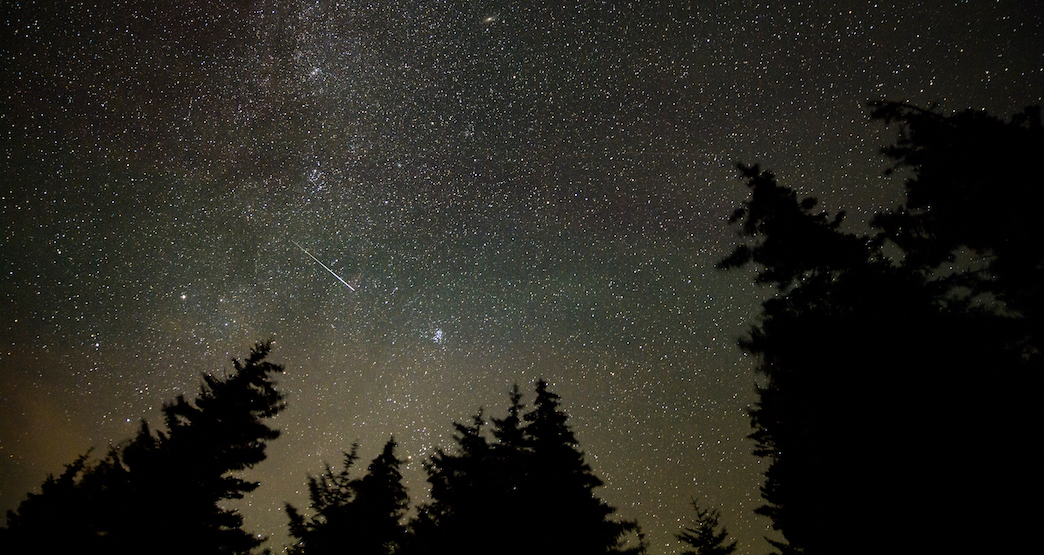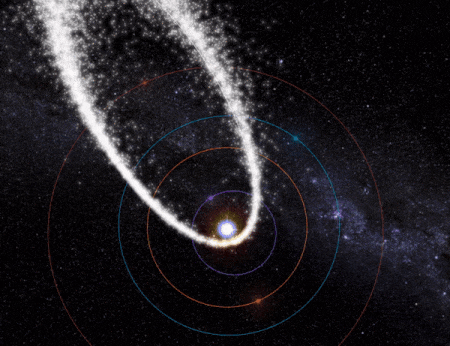
SCIENCE COOKIES
Science articles with chocolate chips
Meteor showers
Published: 9/9/2021
Author: Javier Pantoja
Many shooting stars, stars that move so fast that it is difficult to see them and that, according to superstitions, can also grant you wishes. Meteor showers are undoubtedly a spectacle worth watching. But what are shooting stars actually? And how do meteor showers occur?
What is a shooting star?
Shooting stars get their name because they look like a white dot, like stars, but they cross the sky so quickly that they are hard to see.

Credits: NASA/Bill Ingalls
Although they appear to be as far away as normal stars, they are actually small bits of rock or dust entering the atmosphere. These pieces of rock are called meteors in astronomy, they should not be confused with meteorites, since meteors differ in that they do not touch the surface of the Earth. This is because they are so small (from millimeters to centimeters in diameter) that they burn and disintegrate in the atmosphere due to friction with the air.
Contrary to what you may think, the glow is not due to the rock burning. In reality, both the glow and the tail are due to hot, ionized air from the meteor's passage.
What is a meteor shower?
While a meteor can strike Earth at any time, there are times when several shooting stars per hour can be observed over several days. Events like that are called meteor showers .
What causes a meteor shower?
Meteor showers are a consequence of the passage of comets. Comets are made of a mixture of ice and rock. As the comet approaches the sun, it slowly disintegrates, producing the familiar comet tail that we can see. Those debris that detach from the comet remain in the same orbit or a very similar one and are concentrated at points close to the comet.

Credits: MeteorShowers.org
The orbits of comets are usually much more elongated than those of planets, plus they are not in the same plane. Sometimes a comet's orbit intersects or overlaps Earth's, and as Earth passes through that area, it encounters the cloud of dust, rock, and ice left by a comet's passage, giving rise to a shower of stars.
How to observe a meteor shower?
The best way to observe them is to find a place with little artificial light and a clear sky. They are best seen with the naked eye, but binoculars can also help. They can usually be seen throughout the night or most of it. The names of each meteor shower come from the constellation from which they appear to come. So it is best to direct your eyes towards their corresponding constellation.
Meteor showers usually last about a month and during that time between 10 and 30 shooting stars per hour can be observed. The densest recorded meteor shower was the 2001 Leonid Meteor Shower, which recorded up to 1,500 meteors per hour. The Leonid Meteor Shower occurs every year around November and is at its strongest every 33 years.
Don't forget to check the astronomic calendar to find out when meteor showers occur and at what times they are best observed.
References
https://coolcosmos.ipac.caltech.edu/ask/255-What-is-a-shooting-star
https://spaceplace.nasa.gov/meteor-shower/en/
https://www.merida.gob.mx/planetario/pdf/lluvia_estrellas.pdf
https://www.scientificamerican.com/article/what-causes-a-meteor-show/





